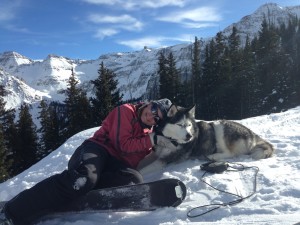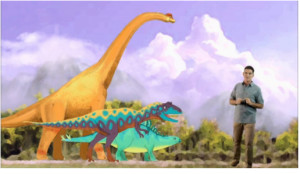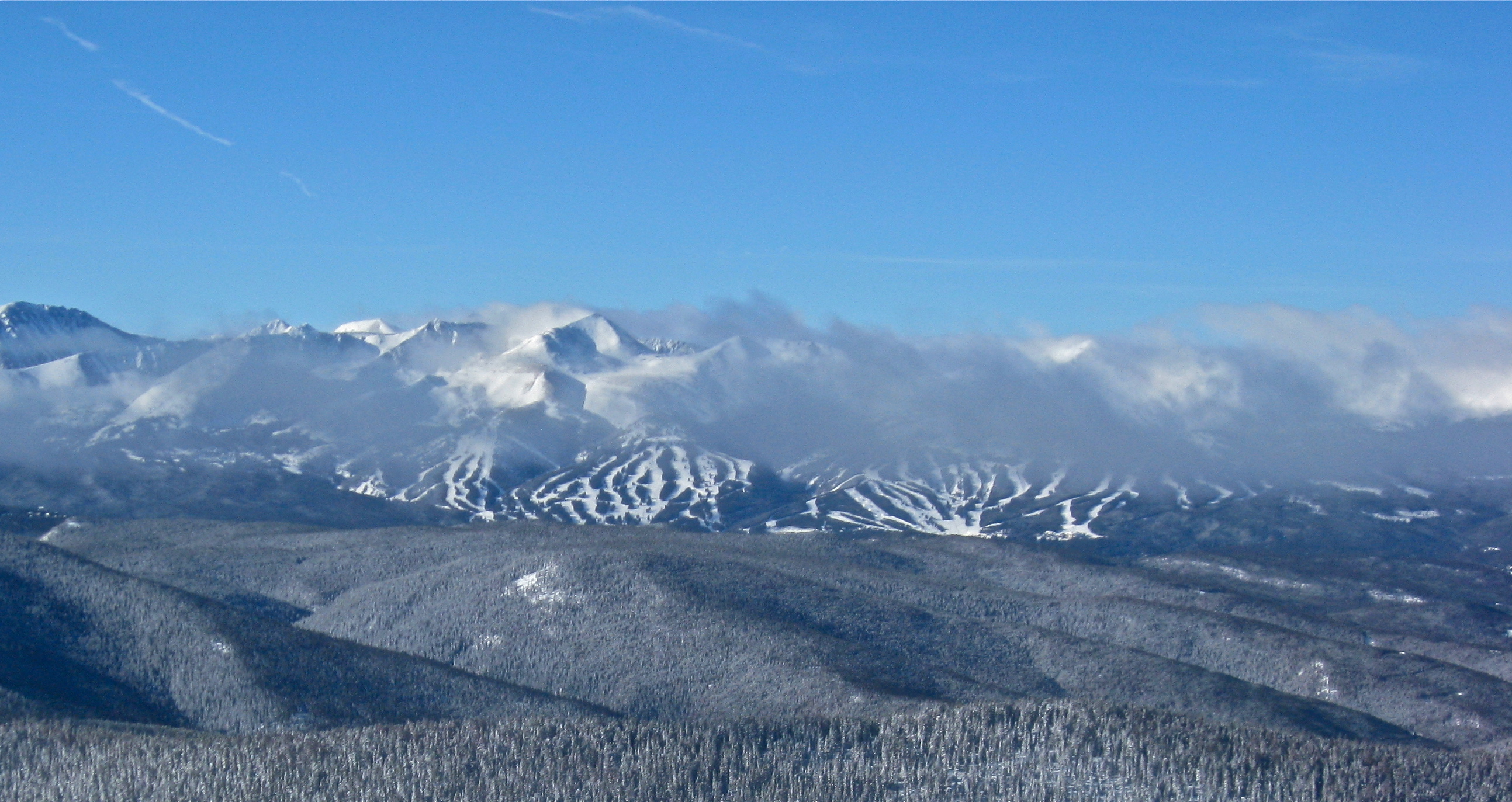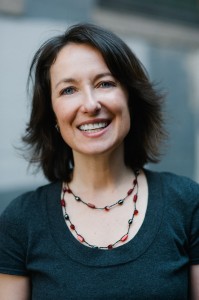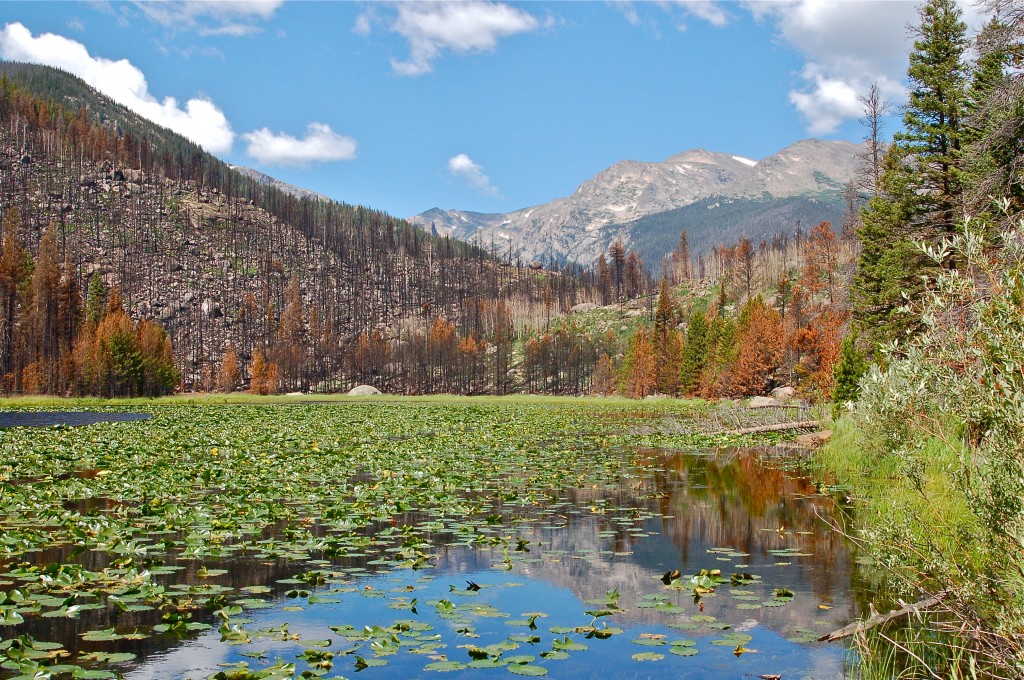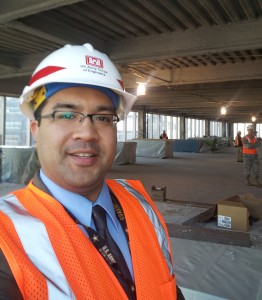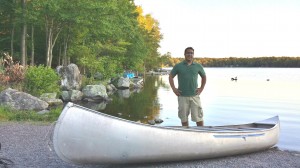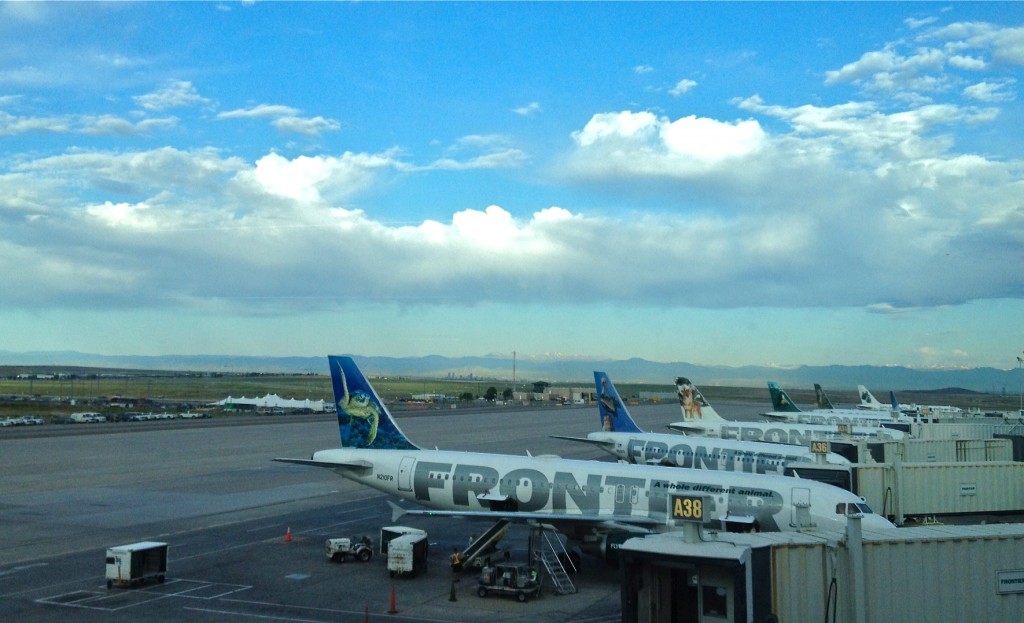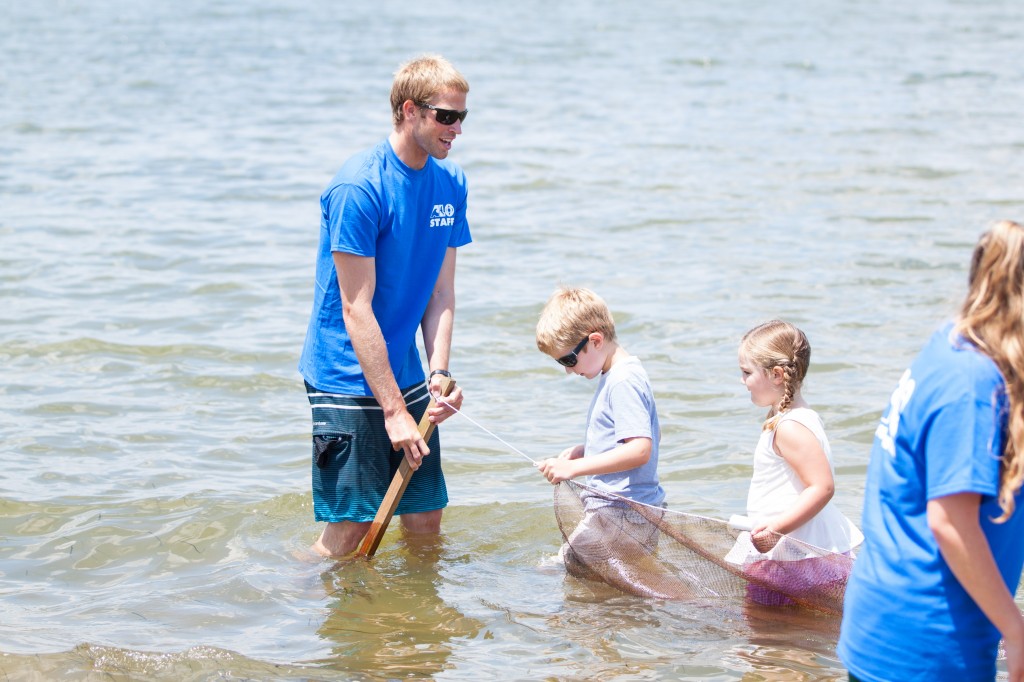
Chris during an ALO summer program.
I’ve been going to Long Beach Island, NJ for over a decade and recently took my first trip there since Hurricane Sandy damaged so much of it in October 2012. The barrier islands up and down the Atlantic coastline are not only beautiful and popular vacation destinations, but they are an important part of the overall coastal geology and ecosystem. Like all of our favorite natural environments we have to find that balance between use, development, and protecting the natural environment. If it is misused and the fish populations dwindle, the water is polluted, or the coastlines are poorly managed, then we will lose those the very reasons we want to be there.
That is where an organization like the Alliance for a Living Ocean (ALO) comes in, whose work to rebuild and restore the island is thriving a year after Hurricane Sandy. I met with their Executive Director, Christopher Huch Jr. at his office on LBI to talk about what they do and his place as a steward for a healthy coastal environment.
The National Environmental Professional: Let’s start with ALO, tell me a bit about the organization and your work with it.
Christopher Huch: We started back in the 80’s when ocean dumping was so big. In 1987 there was not only trash washing up, but also medical waste. That was the summer that gave New Jersey this persona in popular culture that, “don’t go to the beaches or you’ll be walking on needles.”
It started as a grass roots effort. They decided to do something about it, so they formed ALO in 1987, got together with other groups, attended a bunch of rallies on Capitol Hill, and ocean dumping was banned and officially stopped by the early 1990’s.
After that point we went through a time when we had to figure out what are we doing. Our biggest environmental issue after ocean dumping was Barnegat Bay on the other side of the barrier island. One of the issues is, since the 1980’s we’ve had a pretty large build out of the water shed. So we’ve got issues with runoff. In Barnegat Bay it’s especially a big issue because the flushing time of the bay is 70 days. People love having green lawns around here. People throw out so much fertilizer it all ends up running off and goes into the bay, which is really damaging to one of the keystone species, eel grass, which is this submerged aquatic vegetation that provides a nursery for virtually every viable commercial fish dock on the eastern seaboard, whether directly or indirectly. Eel grass since the 1970s, since they first started mapping, has been slowly declining. So we were focusing on Barnegat bay issues for a good 10-15 years.
Our name association wasn’t reflective of what we were doings. As people saw that ocean dumping was banned, it was like, “Job well done. Don’t need to donate to them anymore.”
When they hired me on, we were at the end of it. They hired me and said whatever you want to make this into something again.
The first year I was here was all about trying to cut costs. I worked on that a lot. I worked on strengthening our partnerships in the area. Things were really going in the right direction going into last fall when we got hit with Sandy. When Sandy hit it was a complete reevaluation. For me it was tough because I had left a position at Rutgers University as a researcher there to come and come to this. I left to come here; I had one year and my job was gone.
We were all off the island. I had no idea if the building was still here. There were rumors running rampant. We had about 3 and half feet of water in here.
After the storm the board of directors decided they wanted to keep the organization going so immediately we got involved with a cleanup that was being put on by a local lifeguard. He was going to be home for Thanksgiving so he set up a Facebook event for his buddies to go do a beach cleanup. So, He made this Facebook event, planned to have 8-10 of his buddies to join him and forgot to set it as private and it went from 8-10 to 900 in about a 24-hour period at which point he called me and said, “What do I do?” and asked for help.
We do beach clean ups on a regular basis throughout the year. We were kind of equipped and ready to handle it. That set the stage for the work throughout the winter. We had cleanups every weekend through January and every other weekend through May.
One of the groups we got involved with right away after the storm, a local company called Jetty, a couple of young guys. They run a couple events to help the surf culture in the area. They printed these t-shirts to raise money for Sandy. Right away they had money coming in. As soon as they had $20 in the budget they were buying up all the water they could to bring to the emergency responders. They paired up with another group called Waves for Water, started by a retired professional surfer name Jon Rose. The whole idea is to bring drinking water to all these third world countries he visited touring the world surfing. He had experience with disaster relief and connections with the surf community.
We were picking stuff out of trees. It was a long and arduous process, but we got through the winter. We got the office rebuilt. In the summer we had our educational programs going again and now we’re getting ready to start the process of really replanting the dunes in the area. So that’s our big tasks.
TNEP: I can see why you’re involved with ALO. You have a degree in Marine Science and a Professional Science Masters in Environmental Science and you’re a surfer. So it’s not hard to put together how this is important to your life.
CH: I grew up in Monmouth County, NJ and we moved down here in 98 and at that time I had no experience with the bay. I was really ticked at my parents. I was really getting into surfing at that point. I was, “What did you do? It smells weird. It doesn’t taste right.” The smell of wetland in the bay is an acquired taste.
My family had a charter boat business up in Monmouth County. We sold it when we came down here. My dad is a teacher. My mom got involved with an organization on the mainland, the Tukerman Seaport, a maritime history museum. So I had that kind of upbringing where I had this appreciation for everything. When I was in high school I attend a vocation school part time, the Marine Academy of Technology and Environmental Science. It’s an amazing program. At that time it was really groundbreaking and at this time the kids can put me to shame.
I went to Stockton College, which is considered to be one of the better environmental schools because of its location – in the middle of the Pinelands area, this lush natural habitat and also on the border of Great Bay watershed, which is the most pristine watershed in the United States, oddly enough in New Jersey.
I went to Stockton for my bachelors and ended up staying for the first year of that professional science masters program in environmental science. The whole time I was working for Rutgers at the Jacques Cousteau National Estuarine Research Reserve. So I got my hands into a lot of different research projects.
TNEP: One of the things I liked about ALO is, “education and action”.
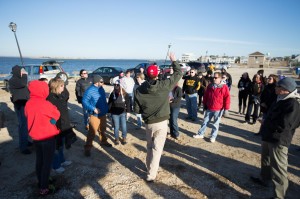
An ALO clean up day.
CH: There’s that mission statement you’re referring to, “The mission of the Alliance for a Living Ocean is to promote and maintain clean water and a healthy coastal environment through education and action. We recognize the need to manage our entire watershed since all water flows from “the raindrop to the ocean.” What that actually means is open to interpretation at all times and where to focus. The Board has been excellent to embrace new ideas, new ways of doing things, pushing the social media.
TNEP: When I first found you guys, I was curious how active the organization is and went right to your Facebook page and found that you have a very active page. Have you found the Facebook page to be informative and helpful?
CH: We’re kind of in a weird section of New Jersey. The two major newspapers of the Jersey Shore are the Press of Atlantic City south of here, or the Asbury Park Press, which is north of here. Islanders have this mentality of, “I don’t care what’s going on elsewhere.” The only paper we have for our area is The SandPaper, which is this free weekly newsletter. Obviously after the storm you can’t go pick up your copy of the Sand Paper. Social media is really how everyone got in touch.
The people that stayed on the island were cut off from the mainland and the people on the mainland were cut off from the island. Instead of the towns putting out information about what’s going on, it was people posting on their Facebook pages what was happening. I actually was using our Facebook page. We had a following of about 300, which was pretty decent for the new set up and reflected our membership at that time. Friends working on the island were sending me pictures, videos and I was constantly loading that to our Facebook page. We went from 300 people following our page to close to 3000 in a very short amount of time.
People might not have been able to come up and see their home. They were just relying on a quick snippet of a video of a guy driving down the boulevard looking at side streets. They see their neighbors house and, “Oh good, I feel better about my house.” After the storm, that’s what the Facebook page was used for. After that point, we slowly phased back into our natural role as an environmental organization getting things out there. We’re still alerting the public about different Sandy-related things. It’s gained us a larger following.
TNEP: It creates a great network on the island.
You changed from a research position to now here. Do your friends and family have a better understanding of what you do now?
CH: At first, the reception to my just leaving the position wasn’t great. My family understood what I was doing, but my friends were like, “Why would you leave a job when you don’t have something set up?”
When I started here, a lot of people were like, “What are you doing? Do you just play with kids all day?” There’s a lot of jokes at my expense. Since Sandy, as the organization has been received by the public there’s been a lot more of a respectful position from my former coworkers. They’re excited for me, for the work I’m doing. I’ve even had a couple of my friends who are jealous of the work I’m doing. It’s just been so rewarding.

A calm day at LBI.
TNEP: I can sense the passion in you. You’re a surfer. How do your peers in the surf community see you? Do they have that appreciation and understanding?
CH: We’ve got a really unique surf culture here on Long Beach Island. It’s a really tight knit group. If you’re a year-round surfer here, you’ve got to be in it. The water gets down to the 20’s some times.
A lot of the guys here aren’t your typical southern California surfers. You see the guys around here, a lot of them dress in flannel. We resemble lumberjacks more often than we do your typical surfer. Most of them are local guys, hard working guys that have their own business. A lot of them are actually in the fishing and clamming communities. They are already in the natural environment and appreciate that we need to do something. That we need to save what we have or I’m going to be out of a job in the future.
We actually started a program called Surf Stewards. We would take surf instructors and teach them how to give a quick 1 minute lesson into their surf lessons so that anybody who gets into surfing would have a little bit of understanding on how to protect the environment as well as a little surfing etiquette.
That program had been initiated and I came on board and took it a bit further. I have a lot of contacts in the surf community. We set up this idea where people could sign up and take this pledge to not only go out and surf and not kill people, but also to protect the environment – use reusable water bottles, pick up a few pieces of trash when you walk on the beach, every time you walk off the beach.
That wasn’t really groundbreaking, but what is cool is that we set it up this early alarm system. Surfers are the first ones in the water every day. They’re the last ones out of the water every day. They’re the ones out past where everybody is playing. They’re also the ones who are most in tune with what’s going on.
We actually had this situation where it was the middle of winter. It was a foggy day, but there are waves and there are guys out surfing. Nobody else is on the beach. The township crews don’t go on the beach in the winter. I got a phone call from one of the guys in the program. “Hey. There’s trash washing up in Harvey Cedars and there’s a lot of it. You should get over here.”
It was all these cardboard bait boxes that probably inadvertently fell of a fishing boat, but there were hundreds of them. With the fog and nobody on the beach, nobody would have known about it. They were washing in a specific area. We were able to get in touch with the local borough hall. They got the township crews downs on the beach to clean up.
TNEP: It’s a fantastic story of the connection between your job, the surf community, and LBI.
CH: There used to be this mindset that any groups that were environmentalists were looking to just clamp down on the use of the resources. That’s slowly changing. I think the biggest change around here was the striped bass fishing industry. The striped bass was basically gone. The government came on board and set up this progressive program. In essence, you can have a smaller fish and you can have a larger fish. Those size ranges were set up specifically for breeding and migration. The striped bass population at this point is almost a victim of its own success. It’s gotten so large that it’s starting to impact other fish.
Now the fishing community, especially the recreational fishing around here, is more understanding of what’s going on. These different groups are coming together to understand that instead of working against the recreation fishing laws let’s work with the organizations who are setting this legislations. The sharing of resources has really changed the mindset.
TNEP: What is the long term goal for ALO?
CH: Our biggest focus at this time is going into replanting our island’s dune systems.
Beach replenishment is going to take place across the entire coastline, which is pretty staggering. Luckily the environmental ramifications of beach replenishment are really low. You’re basically worried about the interstitial life, the stuff that lives between the sand grains. But that stuff comes back within a few weeks. We don’t have any opposition to beach replenishment in that regard.
The idea now is to get these projects to form more of a natural profile. We want to see it reflect the natural sand bars, the natural berms that form. Not only are they natural features they are also used for protective purposes during storms. They help break up energy. That’s one that is not necessarily what the organization is focusing on, but is one that a couple of us within the organization are working on with the local communities.
The dune planting is a big thing. When the Army Corps of Engineers comes through and plants them, they plant them with a monoculture of dune grass. What is really fantastic about it is that it’s capable of surviving in this environment that’s really harsh – heat, cold, salt spray. It doesn’t need much organic content to get going. It absorbs a lot of nutrients from the air. One plant can have roots can have roots that extend 30+ feet. The reason why it’s planted is, 1. The sand that’s blowing off the surface of the dune hit the grass and fall back down; and 2. As wave energy eats away at the dune, these roots help hold the dune in place.
What we found is that these dune grasses did not hold the dunes in place as much as we would like compared to dunes with dune grass with a whole bunch of other natural vegetation. Dune grass does a great job to begin with, but you throw all these other plants in there, it makes the dunes stronger.
We dedicated $11,000 to dune planting on Long Beach Island and that’s just a start. The capability of us to do that is fantastic to our board members.
We’re going to try to make sure that the dunes are planted in a way that reflects what a natural dune environment should have. We’re going to try to get as much natural vegetation in as possible. In doing so not only will we create a dune that’s much strong and will protect the community from future storm events, we’re also creating an ecosystem again that was lost for a bit – a real ecosystem that has checks and balances in it. If you just have dune grass, you really can’t have any animals in it. If you have dune grass and goldenrod, suddenly you can have butterflies. If you have dune grass, goldenrod and bayberry then you’ve got some small mammals like rabbits living in there. We’re really excited about the possibility of creating an ecosystem that has largely been lost due to development in the area.
TNEP: Chris, this was great. It was great to hear about what you and the ALO are doing to protect LBI.

